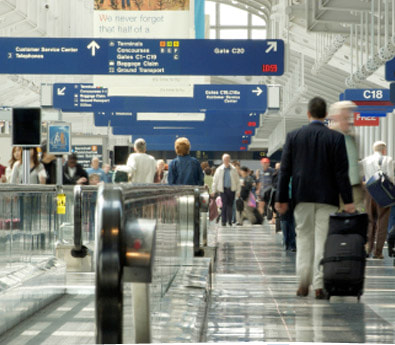|
Destination Information - Lincoln, Nebraska, USA
Exploring Historic Lincoln: A Charming Destination in Nebraska
Nestled in the heart of the Great Plains, Lincoln, Nebraska, beckons visitors with its rich history, warm hospitality, and an array of attractions. Known for its beautiful architecture, vibrant cultural scene, and friendly locals, this charming city offers a unique experience for travelers seeking an authentic American destination. In this article, we'll delve into the captivating history of Lincoln, highlight the top things to see and do, and provide valuable tips for making the most of your visit. Historical Tapestry: Founded in 1856 as the village of Lancaster, Lincoln has evolved into a thriving capital city over the years. Named after Abraham Lincoln, the sixteenth president of the United States, the city's history is deeply intertwined with the nation's past. To immerse yourself in this history, a visit to the Nebraska State Capitol is a must. This majestic building, with its Art Deco architecture and towering domes, offers guided tours that showcase the state's heritage. For an even deeper historical perspective, head to the Lincoln History Museum. Housed in the former Carnegie Library, this museum presents captivating exhibits that chronicle the city's growth and development. Discover artifacts, photographs, and stories that bring the past to life, highlighting Lincoln's transformation from a small frontier town into a modern metropolis. Exploring Lincoln's Charms: Beyond its historical significance, Lincoln boasts an impressive array of attractions to engage and entertain visitors. A stroll through the Historic Haymarket District is a delightful way to experience the city's vibrant atmosphere. Lined with unique shops, art galleries, and restaurants, this revitalized area perfectly blends old-world charm with modern energy. Nature enthusiasts will find solace in Lincoln's beautiful parks and gardens. The Sunken Gardens, a horticultural masterpiece, showcases meticulously designed flowerbeds, vibrant blooms, and serene paths. The Pioneer Park Nature Center offers a tranquil escape, featuring hiking trails, wildlife exhibits, and educational programs for all ages. To dive into the city's thriving arts scene, catch a performance at the Lied Center for Performing Arts or the Sheldon Museum of Art. These cultural hotspots regularly host concerts, theater productions, and exhibitions that celebrate creativity and talent. Tips for Travellers: When planning your visit to Lincoln, keep a few tips in mind to enhance your experience. Firstly, be prepared for the weather, as Nebraska's climate can vary greatly throughout the year. Layers and comfortable footwear are advisable, ensuring you're ready to explore, rain or shine. Lincoln is known for its warm and welcoming locals, so don't hesitate to strike up a conversation. Nebraskans are proud of their state and love to share their knowledge and recommendations. Engage with the community to discover hidden gems and local favorites. To make the most of your time in Lincoln, consider utilizing the city's extensive bike trails. Rent a bicycle and pedal through the picturesque landscapes, taking in the sights at your own pace. This eco-friendly mode of transportation is both enjoyable and convenient, allowing you to explore various neighborhoods and parks effortlessly. Lastly, immerse yourself in the local cuisine. From hearty Midwestern classics to innovative culinary creations, Lincoln's dining scene is diverse and flavorful. Sample a Nebraska steak, indulge in comfort food, and don't forget to try the iconic "ranch dressing" invented right here in the state. Conclusion: With its fascinating history, diverse attractions, and friendly ambiance, Lincoln, Nebraska, invites visitors to explore and discover its unique charms. From the architectural wonders of the State Capitol to the cultural vibrancy of the Haymarket District, this city offers a captivating experience for travelers. Whether you're interested in delving into history, indulging in art and culture, or immersing yourself in nature, Lincoln has something to offer everyone. So pack your bags, embark on an adventure, and let the enchanting city of Lincoln captivate your heart. |
|

|
|
Discount Airline Tickets | Flights | Airports | Privacy Policy | About Us | Contact Us
FlyForLess.ca is an affiliate of Aviasales/JetRadar, a leading flight search engine that allows users
to compare airfares from over 700 airlines and travel agencies in order to find the cheapest flight tickets.
We offer discount airline tickets with a database of over 2 million international airfares, as well as car rentals, hotels, and vacation packages
with departures from cities across Canada. Book your cheap flights, discount car rentals, and special hotel rates with FlyForLess.ca
©2023 FlyForLess.ca. All rights reserved
FlyForLess.ca is an affiliate of Aviasales/JetRadar, a leading flight search engine that allows users
to compare airfares from over 700 airlines and travel agencies in order to find the cheapest flight tickets.
We offer discount airline tickets with a database of over 2 million international airfares, as well as car rentals, hotels, and vacation packages
with departures from cities across Canada. Book your cheap flights, discount car rentals, and special hotel rates with FlyForLess.ca
©2023 FlyForLess.ca. All rights reserved
